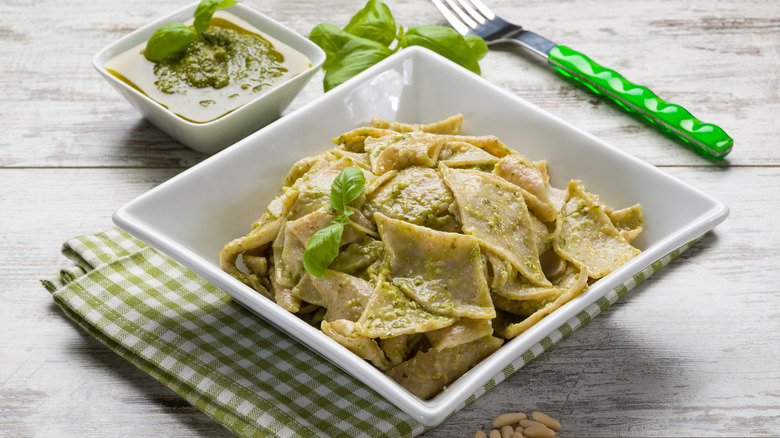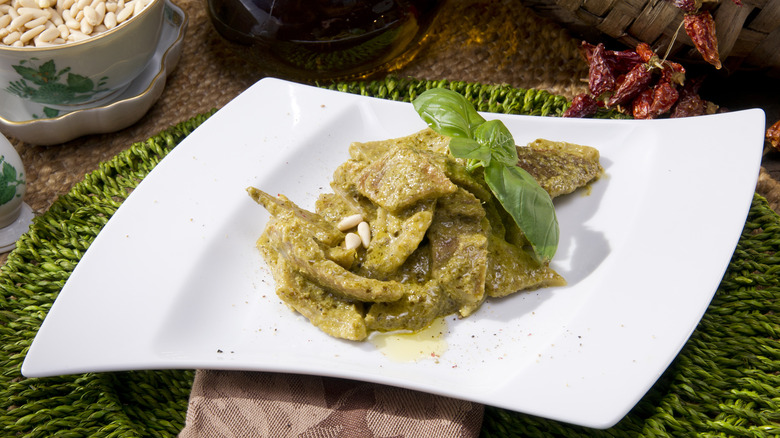One Of The Oldest Ancient Pasta Dishes Is Still Enjoyed Today
You've probably all heard the legend that the pasta was invented in China and only introduced to Italy thanks to the explorer Marco Polo. The truth is that the precursors to what we know as pasta (or noodles) were developed in many countries independently. Many of the pasta dishes we know today were already common in Italy in the 13th century (predating Marco Polo), with written records of ravioli, gnocchi, and macaroni dating from this time. But there's one pasta dish that goes back much, much further — as far back as the 4th century B.C.E.
Testaroli (or singular testarolo) might not seem like a pasta at first glance. Rather than a traditional pasta dough, testaroli is made from a batter that's poured into a large flat pan with a domed lid called a testo, from which the pasta takes its name. After being cooked in a method similar to how you prepare a crepe, it's then sliced into diamond shapes and boiled like regular pasta.
This unique dish was conceived by the Etruscans, a people that inhabited central Italy between the 8th and 3rd century B.C.E. Their first iteration of the dish used a dough that was rolled out into sheets and left to dry in the sun. And it's thanks to the Etruscans that we can trace the origins of the dish, as they left bas-relief sculptures of their daily life.
Testaroli in modern Italy
This pancake-cum-pasta is still a popular dish in the provinces of Tuscany and Liguria, particularly in an area on the border of the two known as Lunigiana. Once considered a peasant's dish, served simply with olive oil and cheese, it is now recognized as a specialty dish worthy of preservation by the Slow Food Presidium.
The toppings vary from region to region, and might include mushroom sauce, tomato and pecorino, or ragout. However, in Lunigiana, testaroli is most commonly served with pesto, with the slightly spongey texture of the pasta soaking up plenty of the rich sauce.
To make your own testaroli at home, you'll need large enough pan with a lid — the traditional size is around 1.5 feet — though some cooks will tell you it's difficult to nail the unique texture. Thankfully, commercial pasta production means you can now buy this pasta ready-made. It's sold as full discs that are vacuum sealed, ready for you to slice, boil, and smother in pesto.

